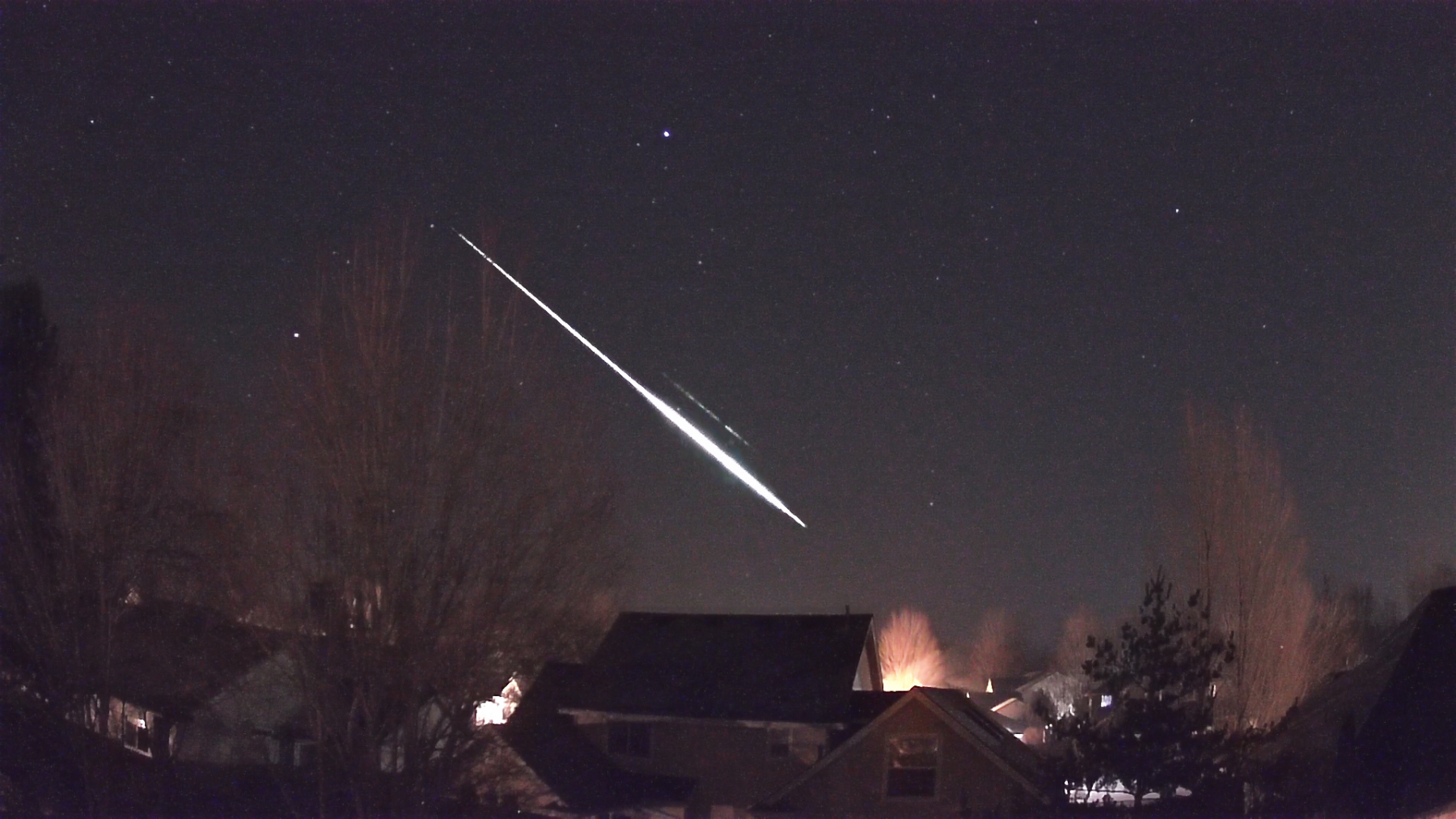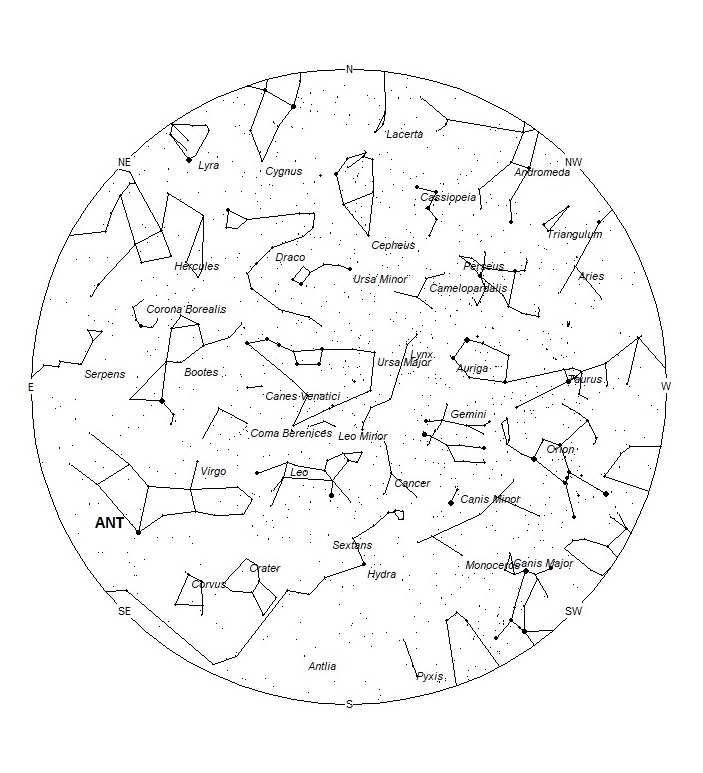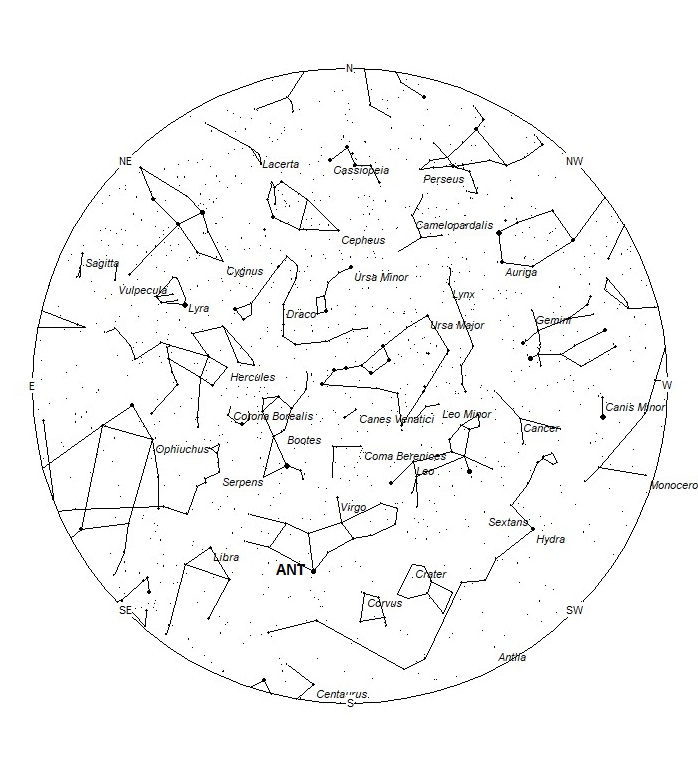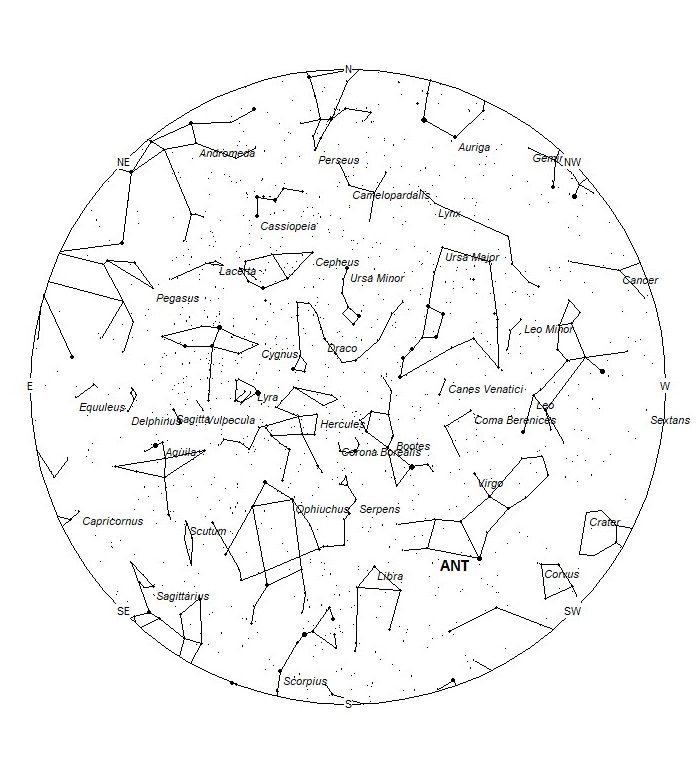 Jordan Ragsdale captured this impressive fireball using his AllSky Camera System on February 5, 2022, at 4:58 MST (11:58 UT) from Eagle, Idaho, USA. The faint secondary trail is an artifact of the camera. ©Jordan Ragsdale
Jordan Ragsdale captured this impressive fireball using his AllSky Camera System on February 5, 2022, at 4:58 MST (11:58 UT) from Eagle, Idaho, USA. The faint secondary trail is an artifact of the camera. ©Jordan RagsdaleMeteor activity picks up a bit during April as the Lyrids become active during the month. They are active from the 15th through the 29th, with a pronounced maximum on the 22nd. Sporadic rates during April are steady as seen from both hemispheres with southern observers enjoying more activity that can be seen from the mid-northern hemisphere. The eta Aquariids will become active the second half of the month, adding a few swift meteors to the late morning scene.
During this period, the moon waxes from a thin crescent to nearly half-illuminated. This weekend the thin crescent moon will set shortly after dusk, so no moonlight will interfere during the remainder of the night. Late in the period the evening hours have interfering moonlight, but the more active morning hours are still free from any interference. For evening observers, the estimated total hourly rates should be near 3 as seen from mid-northern latitudes (45N) and 4 as seen from tropical southern locations (25S) For morning observers, the estimated total hourly rates should be near 7 as seen from mid-northern latitudes (45N) and 11 as seen from tropical southern locations (25S). The actual rates will also depend on factors such as personal light and motion perception, local weather conditions, alertness, and experience in watching meteor activity. Evening rates are slightly reduced during this period due to moonlight. Note that the hourly rates listed below are estimates as viewed from dark sky sites away from urban light sources. Observers viewing from urban areas will see less activity as only the brighter meteors will be visible from such locations.
The radiant (the area of the sky where meteors appear to shoot from) positions and rates listed below are exact for Saturday night/Sunday morning April 2/3. These positions do not change greatly day to day so the listed coordinates may be used during this entire period. Most star atlases (available at science stores and planetariums) will provide maps with grid lines of the celestial coordinates so that you may find out exactly where these positions are located in the sky. I have also included charts of the sky that display the radiant positions for evening, midnight, and morning. The center of each chart is the sky directly overhead at the appropriate hour. These charts are oriented for facing south but can be used for any direction by rotating the charts to the desired direction. A planisphere or computer planetarium program is also useful in showing the sky at any time of night on any date of the year. Activity from each radiant is best seen when it is positioned highest in the sky, either due north or south along the meridian, depending on your latitude. It must be remembered that meteor activity is rarely seen at the radiant position. Rather they shoot outwards from the radiant, so it is best to center your field of view so that the radiant lies at the edge and not the center. Viewing there will allow you to easily trace the path of each meteor back to the radiant (if it is a shower member) or in another direction if it is sporadic. Meteor activity is not seen from radiants that are located far below the horizon. The positions below are listed in a west to east manner in order of right ascension (celestial longitude). The positions listed first are located further west therefore are accessible earlier in the night while those listed further down the list rise later in the night.
These sources of meteoric activity are expected to be active this week.
The large Anthelion (ANT) is currently centered at 13:44 (206) -10. This position lies in east-central Virgo, 4 degrees east of the 1st magnitude star known as Spica (alpha Virginis). Due to the large size of this radiant, these meteors may also be seen from Libra as well as eastern Virgo. This radiant is best placed near 02:00 LST when it lies on the meridian and is highest in the sky. Rates at this time should be near 2 per hour as seen from the Northern Hemisphere and 3 as seen from south of the equator. With an entry velocity of 30 km/sec., the average Anthelion meteor would be of slow velocity.
As seen from the mid-northern hemisphere (45N) one would expect to see approximately 5 sporadic meteors per hour during the last hour before dawn as seen from rural observing sites. Evening rates would be near 2 per hour. As seen from the tropical southern latitudes (25S), morning rates would be near 8 per hour as seen from rural observing sites and 3 per hour during the evening hours. Locations between these two extremes would see activity between the listed figures. During this period evening rates are slightly reduced due to moonlight.
| SHOWER | DATE OF MAXIMUM ACTIVITY | CELESTIAL POSITION | ENTRY VELOCITY | CULMINATION | HOURLY RATE | CLASS |
| RA (RA in Deg.) DEC | Km/Sec | Local Summer Time | North-South | |||
| Anthelions (ANT) | — | 13:44 (206) -10 | 30 | 02:00 | 2 – 3 | II |







 You saw something bright and fast? Like a huge shooting star? Report it: it may be a fireball.
You saw something bright and fast? Like a huge shooting star? Report it: it may be a fireball.  You counted meteors last night? Share your results with us!
You counted meteors last night? Share your results with us!  You took a photo of a meteor or fireball? You have a screenshot of your cam? Share it with us!
You took a photo of a meteor or fireball? You have a screenshot of your cam? Share it with us!  You caught a meteor or fireball on video? Share your video with us!
You caught a meteor or fireball on video? Share your video with us!